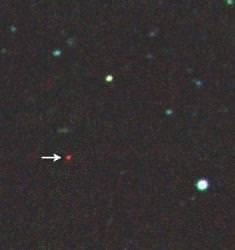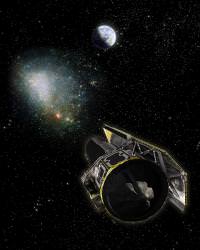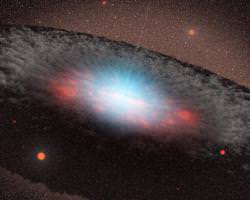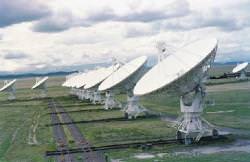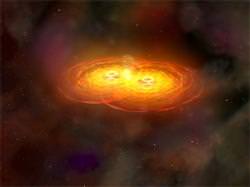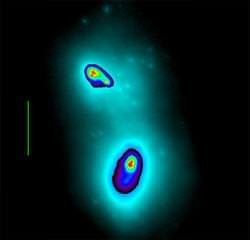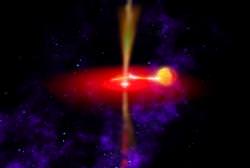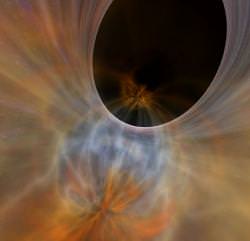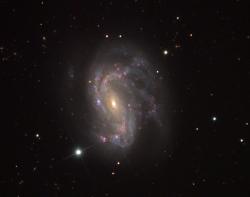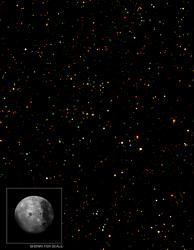Here’s a scenario that will face many of us in the far future. You’re hurtling through the cosmos at nearly the speed of light in your spaceship when you take a wrong turn and pass into the event horizon of a black hole. Uh oh, you’re dead – not yet, but it’s inevitable. Since nothing, not even light can escape the pull from a black hole once it passes into the event horizon, what can you do to maximize your existence before you join the singularity as a smear of particles?
Physicists used to think that blackholes were sort of like quicksand in this situation. Once you cross the event horizon, or Schwarzschild radius, your date with the singularity is certain. It will occur at some point in the future, in a finite amount of proper time. The more you try to struggle, the faster your demise will come. It was thought that your best strategy was to do nothing at all and just freefall to your doom.
Fortunately, Geraint F. Lewis and Juliana Kwan from the School of Physics at the University of Sydney, have got some suggestions that fly in the face of this stuggle = quick death hypothesis. Their paper is called No Way Back: Maximizing survival time below the Schwarzschild event horizon, and it was recently accepted for publication in the Proceedings of the Astronomical Society of Australia.
When an unlucky victim falls into the event horizon of a black hole, they will survive for a finite amount of time. If you fall straight down into a stellar black hole, you’ll last a fraction of a second. For a supermassive black hole, you might last a few hours.
Due to the tremendous tidal forces, an unlucky victim will suffer spaghettification, where differences in gravity from your head to your feet stretch you out. But let’s not worry about that for now. You’re trying to maximize survival time.
Since you’ve got a spaceship capable of zipping around from star to star, you’ve got a powerful engine, capable of affecting your rate of descent. Point down towards the singularity and you’ll fall faster, point away and you’ll fall more slowly. Keep in mind that you’re inside a black hole, flying a spaceship capable of traveling near the speed of light, so Einstein’s theories of relativity come into play.
And it’s how you use your acceleration that defines how much personal time you’ll have left.
In a moment of panic, you may point your rocket outwards and fire it at full thrust, keeping the engine running until you arrive at the central singularity. However, Lewis and Kwan have demonstrated that in the convoluted space-time within the event horizon, such a strategy actually hastens your demise, and you’ll actually end up experiencing less time overall. So, what are you to do? Lewis and Kwan have the solution, identifying an acceleration “sweet-spot” that gives you the maximal survival time. All you have to do, once across the event horizon, is fire your rocket for a fixed amount of time, and then turn it off and enjoy the rest of the fall.
But how long should you fire your rocket for? Lewis and Kwan show this is a simple calculation involving the mass of the black hole, how powerful your rocket is, and how fast you crossed the event horizon, easily doable on a desktop computer.
Here’s another analogy from Lewis:
“Consider a race to the centre between a free faller and a rocketeer. Suppose they cross the event horizon together holding hands. As they cross, they start identical stop watches. One falls inwards, while the other accelerates towards the centre for a little, then swings their rocket round and decelerates such that the free faller and the rocketeer meet and clasp hands again just before hitting the singularity. A check on their stop watches would reveal that the free faller would experience the most personal time in the trip. This is related to one of the basic results of relativity – people in freefall experience the maximum proper time.”
So now you know. Even after you’ve fallen into the black hole’s event horizon, there are things you can do to lengthen your harrowing journey so that you get to experience more time.
Time to you can use to deal with your spaghettification problem.
Original Source: Arxiv research paper

